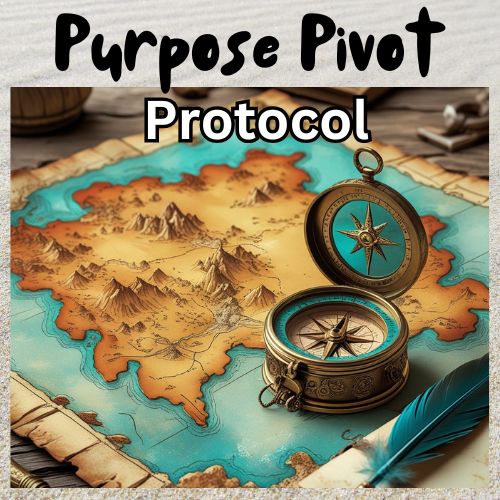This post challenges the conventional approach to boundaries—the idea that they’re defensive walls meant to keep people out. Instead, I introduce a powerful reframe: healthy boundaries are doors you control, not walls you hide behind. This shift transforms boundaries from a guilt-inducing, aggressive act into an empowering tool for curating your life and energy. When you see boundaries as doors, you’re no longer pushing the world away—you’re consciously choosing who and what gets your time, attention, and emotional bandwidth. This metaphor changes everything: the language you use, the energy you carry, and how others respond to you.
For years, I treated boundaries like walls. Big, imposing barriers designed to keep the chaos out. And sure, walls work for a while. They keep you safe. They give you breathing room. But here’s what nobody tells you about walls: they’re lonely. They’re hard to maintain. And eventually, they make you feel like you’re living in a prison of your own making.
The Problem with Solid Brick Walls
We’ve been conditioned to think of boundaries as defensive fortresses. When you internalise this metaphor, you feel guilty every time you set a boundary, because it feels like you’re being cold or selfish. You sound aggressive when you try to enforce them, because you’re in “defend the castle” mode. You end up exhausted because walls require constant maintenance. And worst of all, they isolate you from the very connections that give life meaning.
A wall is permanent.
A wall says, “Stay out.” A door says, “Not right now.” When you think of boundaries as doors, you’re not rejecting people or opportunities. You’re curating them. You’re deciding—consciously, deliberately—who gets access to your time, energy, and emotional bandwidth, and when.
It’s the difference between “I can’t help you, I’m too busy, leave me alone” and “I’d love to help you, and I want to give you my full attention. Can we connect next week when I have space to really be present?” Same boundary. Completely different experience—for you and for others.
You’re not pushing anyone away. You’re honouring both their needs and yours. You’re in control of the access, not scrambling to defend against it. And here’s the beautiful part: when you operate from door energy instead of wall energy, people don’t feel rejected. They feel respected.
What Happens When You Set Healthy Boundaries
I watched this transformation happen with a client I’ll call Maya. She was a creative director at a mid-sized agency, the kind of person everyone wanted a piece of because she was brilliant, generous, and chronically unable to disappoint anyone. Her team loved her. Her boss relied on her. Her friends knew she’d drop everything for a crisis.
The problem was that Maya had stopped creating anything for herself. She’d started the job because she wanted to do something creative, but somewhere along the way, she’d become a full-time firefighter. Every request felt urgent. Every conversation felt like it needed her immediate attention. She’d lie awake at 2 AM, her mind racing through everyone else’s needs while her own creative projects gathered dust.
When we started working together, she said something that stuck with me: “I feel like I’m drowning, but if I ask people to give me space, I’m terrified they’ll think I don’t care about them anymore.”
We talked about the door metaphor. I asked her what would happen if she stopped trying to keep everyone out and started deciding when to let them in. What if her boundary wasn’t about rejection, but about timing? What if she could love her people and still protect the time she needed to do her actual work?
Something shifted. “So I’m not saying no to them. I’m saying yes to them at a different time?”
Exactly.
Maya started experimenting. When her boss dropped a “quick question” on her during deep work time, instead of immediately pivoting (and losing her flow), she’d say, “I’m in the middle of something I need to finish, but I can give you my full attention at 2 PM. Does that work?” When a friend texted in crisis mode, instead of abandoning her evening to rush over (while resenting it), she’d respond with warmth: “I’m here for you. I can’t talk right now, but I’m free tomorrow morning and I want to really listen. Can it wait until then, or do you need me tonight?”
Nine times out of ten, it could wait. And when it couldn’t, Maya showed up fully present instead of half-there and resentful.
The most remarkable thing happened. Her stress didn’t just decrease—it transformed. She stopped feeling like she was constantly bracing for the next demand. She started sleeping better. Her creative projects came back to life. And her relationships actually deepened, because when she was with someone, she was truly with them. The door was open, and she was standing in it, fully engaged.
She told me a few months later: “I didn’t realise how much energy I was spending feeling guilty about boundaries I wasn’t even setting. Now I’m spending that energy on what I actually care about.”
Why This Works (Psychologically Speaking)
Here’s the thing about stress: it doesn’t come from having boundaries. It comes from the internal conflict around them.
When you frame boundaries as walls, you’re operating from a scarcity mindset. There’s not enough of me to go around, so I have to protect what little I have. That mindset triggers defensiveness, guilt, and anxiety. You’re constantly bracing for impact. You’re in survival mode, not creation mode.
But when you frame boundaries as doors, you shift into agency. I have enough. I’m in control. I choose when and how to engage. That sense of control is one of the most powerful antidotes to stress that exists. It’s the difference between reacting to life and designing it.
In my Purpose Pursuit protocol, an online course combined with one-on-one support as you work through it, we dig deep into this connection between boundaries and purpose. Because here’s what I’ve learned after years of working with people who’ve lost themselves in the chaos: if you’re spending all your energy defending walls, you’re not spending it building the life you actually want. You’re in protection mode when you should be in creation mode. Doors allow flow. Walls create stagnation. Doors honour relationships. Walls isolate you from them. Doors reduce stress. Walls just redistribute it.
When you identify what you’re actually protecting—your purpose, your creative energy, the work that lights you up—setting boundaries stops feeling like deprivation and starts feeling like devotion. You’re not keeping the world out. You’re keeping yourself in.
The Language of Doors
Once you embrace this metaphor, your language shifts too. You stop saying “I can’t” and start saying “I can, and here’s when.” You stop saying “No” and start saying “Not right now, but yes to this time.” You stop saying “I’m too busy” and start saying “I’m prioritising X today, but I’d love to give you my full attention on Y.”
Notice the difference? You’re not rejecting. You’re redirecting. You’re opening the door on your terms. And people respond to that. They feel respected, not shut out. They see you as someone with clarity, not someone who’s overwhelmed and defensive.
How to start setting healthier boundaries
So here’s my question for you: Does thinking of a boundary as a “door” instead of a “wall” change how you feel about setting them?
Drop a comment. I’m genuinely curious. Because here’s what I’ve learned: the way you frame your boundaries isn’t just about managing your calendar. It’s about reclaiming your life. It’s about reducing stress not by doing less, but by doing what matters—when it matters—and letting go of the guilt around everything else.
That’s the work we do together in my Purpose Pivot protocol: identifying what actually lights you up, then building the boundaries—the doors—that protect it. If this resonated, I’d love to hear your thoughts. And if you know someone who’s drowning in “yes” but desperate for a way to say “not right now” without the guilt, send this their way.
Let’s normalise boundaries that don’t make us feel like jerks.
P.S. If you’re ready to explore what’s on the other side of your own doors—what you’re protecting, what you’re pursuing, and why it matters—my Purpose Pursuit and Purpose Pivot protocols might be exactly what you need. They’re online courses with one-on-one guidance, designed to help you identify your purpose and build a life around it. DM me if you’re curious.

The Purpose Pursuit Protocol – if you want to discover your life purpose, this course will provide you with the clarity, motivation and direction you need to manifest your next chapter – in both your personal and professional life. Get immediate access

The Purpose Pivot Protocol – drawing inspiration from the Camino de Santiago, this transformative course guides you through a proven framework to recalibrate your authentic purpose and create a meaningful and fulfilling next act. Get immediate access

Author Bio: Dr Margaretha Montagu – described as a “game changer”, “gifted healer”, “guiding light” and “life-enriching author” – is an experienced medical doctor, a certified NLP practitioner, a medical hypnotherapist, an equine-assisted psychotherapist (EAGALAcertified) and a transformational retreat leader who guides her clients through life transitions – virtually, or with the assistance of her Friesian and Falabella horses, at their home in the southwest of France.

